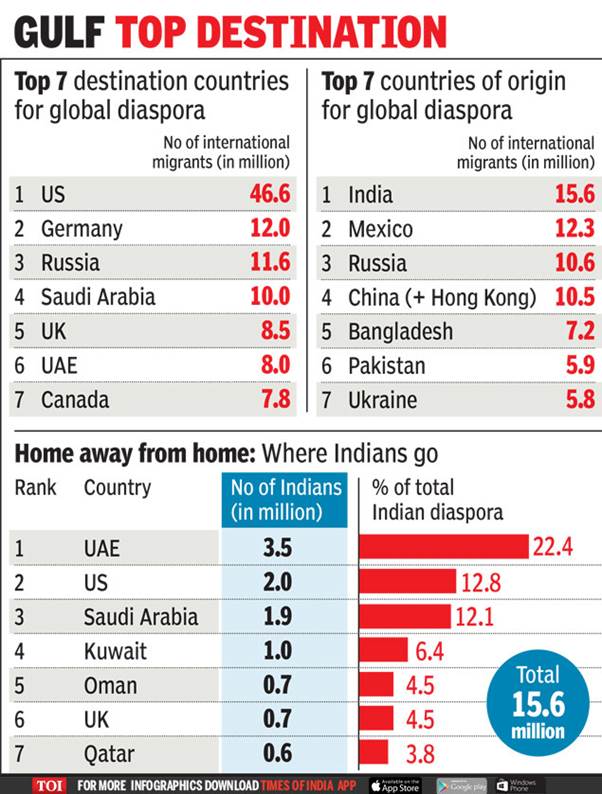Why in news?
Around eight million people in the Gulf Cooperation Council (GCC) countries constitute a unique cohort among Indian diaspora communities around the world.
Significance of Indian workers in West Asia
- Around 50% of them are unskilled and another 30% are semi-skilled.
- Only a small minority of 20% of them are skilled and lucratively employed, but all these migrant workers together form the backbone of India’s ties with the region.
- Their contribution of nearly 40% of the total foreign exchange remittances to India is critical to its economy. Their labour is vital for the GCC economy.
- With no option of assimilation into their host countries, their link to the home country remains intact, unlike Indian immigrants to the West.
Difficulties faced by Indians in West Asia due to COVID-19
- The vast majority of them who are on subsistence wages are facing a tough situation in the wake of the COVID-19 pandemic.
- Living and working conditions make it extremely difficult for them to practise social distancing or get treatment if infected.
- Many of them suffer from pre-existing medical conditions and are used to procuring medicines from India, which is now impossible.
- Vast sectors of the economy are shut, rendering many of them jobless. Thousands are without documentation.
- Dubai, Abu Dhabi and Doha being important transits for international travel, thousands of Indian travellers are also stuck in the region.
Indian Diaspora report as of September 2019
- The count of the Indian diaspora has increased 10% from 15.9 million in 2015, making it the largest in the world, according to the UN’s International Migrant Stock 2019 released on September 2019.
- It now comprises 6.4% of the total global migrant population.
- In 1990, India was behind Russia and Afghanistan as a source of international migrants at 6.6 million with Russia sending 12.7 million abroad and Afghanistan 6.8 million.
- In 2019, Russia fell to the fourth position behind Indian, Mexico and China with 10.5 million migrants.
- The United Arab Emirates (UAE) was the top destination of Indian migrants followed by the US, Saudi Arabia, Pakistan and Oman, as per the data set compiled by the UN Department of Economic and Social Affairs Division.

How can India help them?
- India must work closely with governments of the region to bring them succour.
- Prime Minister Narendra Modi has nurtured good relations with all rulers of the region but the ongoing crisis is testing the endurance of India’s ties with some of the GCC countries.
- The UAE government has said it might revise current partnerships concerning labour relations with nations refusing to cooperate with measures to repatriate private sector expatriates who wish to return home.
- Kerala which is home to more than two million Indian immigrants in the Gulf and Uttar Pradesh, Bihar and Punjab have a significant number of people in the Gulf.
- The Centre must take the initiative to bring together State governments, and work out arrangements with national governments in the region in a manner acceptable to all.
- It will certainly take some effort to arrive at what is doable and desirable at this juncture, but there is no excuse for not doing that.
- That is the least India can do for these people whose search for a livelihood has done the country so much good.




